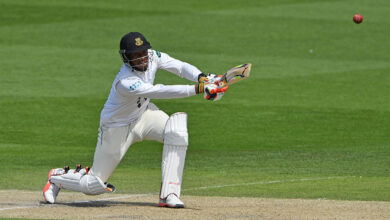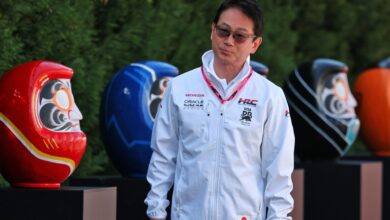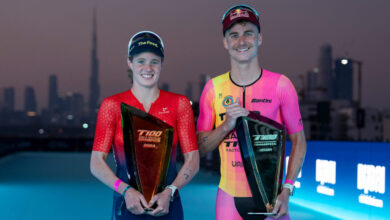Is Formula E’s new Attack Mode a step too far?

“I saw him for about two corners and then I was trying to spot him but then I was like, ‘S***, he’s in the lead. This thing is powerful.’”
Mitch Evans’s victory from last on the grid in the Formula E Sao Paulo E-Prix season-opener last weekend was certainly a surprise to the Kiwi, his Jaguar team and many others, but a close second was the impact of the new Attack Mode.
After dropping to the fringes of the top 10, a few positions ahead of team-mate Evans, Nick Cassidy became the first driver to activate the 350kW mode on lap seven, which for the first time provides all-wheel drive courtesy of the new Gen3 Evo machine.
The performance advantage the extra powered offered was clear to see immediately. Cassidy moved up into the lead inside a lap, having faced almost no resistance from those he had passed.
During pre-season testing and ahead of the race itself, drivers and teams had dubbed the new technology as “a game changer” that would dramatically alter the strategic elements of races – but perhaps no one appreciated exactly how big a difference it would make.
During the last two years of the Gen3 era, drivers would often take both Attack Modes – as required by the rules, and introduced in 2018-19 – at the earliest opportunity, in theory to get it out of the way, such was its lack of effectiveness.

Mortara is a fan of the new Attack Mode, but acknowledges there is less incentive to fight a driver with more power
Photo by: Simon Galloway / Motorsport Images
“The thing I like about Attack Mode this year is there is a clear difference between the two modes [350kW and 300kW] and the difference is that big that it gives you the possibility to attack and move up,” said Mahindra driver Edoardo Mortara.
“I have the feeling in the past seasons you were sometimes taking the Attack Mode more to defend. Now it’s very much an Attack Mode that will give you the possibility to attack the others.
“I think as a driver it actually makes it better. I think it makes it less chaotic. The thing I could see is that when drivers were recognising that you were coming in Attack Mode, they were almost letting you through because there is no point fighting someone that has such a big advantage.”
“We’ve got to be careful that races aren’t won on luck. We still want the best car to win”
Nick Cassidy
Mortara raises a good point about the lack of resistance from defending drivers, who in previous seasons may have tried harder to block cars in Attack Mode, which resulted in contact. Yes, there were two red flags and a safety car during the race in Brazil, but none of those were related to the use of Attack Mode.
While Cassidy was the first to use the opening Attack Mode, he and Evans were some of the last to use the second that coincided after a red flag. Strategically, it allowed them to cycle to the front of the field, as it did with the McLaren pair of Taylor Barnard and Sam Bird, who finished third and fourth.
Cassidy would likely have challenged for the podium places but for his accident with Pascal Wehrlein, but warns that the new Attack Mode could become something of a lucky bullet.
“We’ve got to be careful that races aren’t won on luck,” said Cassidy. “We still want the best car to win, we want to put on a great show, we want entertainment.

Cassidy is concerned that drivers could benefit enormously from fortunately-timed activations that turn the race into a question of luck
Photo by: Alastair Staley / Motorsport Images
“This is me speaking from a driver’s point of view, but I hope that the day we’re fastest in qualifying and we’re fastest in the race and we do a good strategy that we win, and right now it looks very extreme. We’ve got to be careful about the luck factor that’s probably going to be there this season.”
So is it overpowered? There’s no doubt that it is, but perhaps a bigger question is: does it detract from the show? As already explained, such is the advantage of using it that drivers ahead are not inclined to put up a robust defence, creating fewer incidents but also maybe less interest.
Its use in Sao Paulo was also the first time that drivers and teams witnessed its deployment in a race situation, and as such, was far from optimised. With more races and data to study, it’s not inconceivable to think that it will become more refined as drivers take the extra boost on the same laps, therefore effectively cancelling its use. And while strategically it makes sense to hold on to use until the end, doing so could create its own problems.
“If you leave it quite late and you have a safety car and everyone’s bunched up and you still have an attack, it could be a gamechanger and you could pass a lot of guys,” said Sebastien Buemi, who was the last to take his second activation and finished seventh.
“But when you leave it long, if you cannot finish the Attack Mode before the end of the race, you get disqualified so it’s again going to be a compromise between how much risk you want to take.”

Buemi recognises that there will still be an element of compromise – and trends will become clearer as the season progresses
Photo by: Alastair Staley / Motorsport Images
In this article
Be the first to know and subscribe for real-time news email updates on these topics




